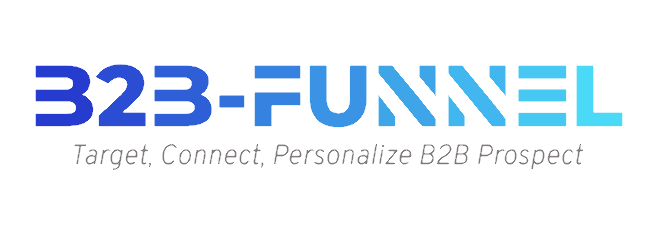Email marketing is a powerful tool for businesses to connect with their target audience, nurture relationships, and drive conversions. However, the success of an email marketing campaign heavily relies on the quality of the email list. In this article, we will explore the differences between inorganic email lists and organic email lists and examine the benefits of using each approach. By understanding the distinctions and advantages, businesses can make informed decisions about their email list building strategies and maximize the effectiveness of their email marketing efforts.
Understanding Inorganic Email Lists:
Inorganic email lists consist of email addresses that are acquired through external sources, such as purchasing lists, scraping websites, or using automated software to collect emails. This approach involves obtaining email addresses without the explicit consent or interest of the individuals who are on the list. While it may seem like a quick and convenient way to expand your email database, using inorganic email lists can have significant drawbacks and should be approached with caution.
One of the main methods of acquiring inorganic email lists is through purchasing lists from third-party vendors. These vendors compile lists of email addresses based on various criteria such as industry, job title, or geographic location. However, the quality and accuracy of these lists can be questionable. Often, the email addresses are outdated, contain incorrect information, or include people who have no relevance to your target audience. This can result in a high bounce rate and low engagement, diminishing the effectiveness of your email marketing campaigns.
Another method of acquiring inorganic email lists is through web scraping. This involves using software or tools to extract email addresses from websites, forums, or online directories. While web scraping may provide a large number of email addresses, it is typically done without the consent of the individuals whose information is being collected. This raises ethical concerns and can lead to legal issues, as it may violate privacy regulations and anti-spam laws in many jurisdictions.
Automated software or bots are also used to collect email addresses from various online sources, such as social media platforms or public directories. These programs can quickly gather a large volume of email addresses, but they often lack the necessary opt-in or consent mechanisms required for ethical and legal email marketing practices. Sending unsolicited emails to individuals who have not expressed interest in your products or services can damage your brand reputation and result in spam complaints or legal consequences.
These lists often lack permission and are compiled without the recipients’ explicit consent or interest in receiving emails from a particular business. Inorganic email lists may offer a quick way to expand the reach of your campaigns, but they come with several disadvantages.
- Poor Data Quality: Inorganic lists are prone to containing outdated or incorrect contact information, leading to high bounce rates and wasted resources. The lack of data verification and maintenance can result in undeliverable emails and negatively impact your overall campaign performance.
- Low Engagement: Since recipients on inorganic lists have not opted in to receive emails from your business, they are less likely to engage with your messages. This leads to low open rates, click-through rates, and conversions. Without a genuine interest in your brand, recipients are more likely to disregard or mark your emails as spam.
- Legal Compliance Risks: Sending unsolicited emails to individuals without their consent can violate privacy and anti-spam regulations, leading to legal repercussions and damage to your brand reputation. In many countries, laws such as the General Data Protection Regulation (GDPR) in the European Union and the CAN-SPAM Act in the United States require explicit consent from recipients before sending commercial emails.
Understanding Organic Email Lists:
Organic email lists are an essential component of successful email marketing campaigns. Unlike inorganic email lists, which are acquired through external sources without explicit consent, organic lists are built by obtaining permission from individuals who willingly provide their email addresses and express interest in receiving communication from your business. Let’s explore the process of building organic email lists and the benefits they offer.
Building an organic email list begins with implementing permission-based strategies to collect email addresses. This typically involves using opt-in forms, subscription forms, lead magnets, and other means to encourage website visitors, customers, or prospects to provide their contact information willingly. By offering valuable incentives, such as exclusive content, discounts, or access to resources, you can incentivize individuals to opt in and join your email list.
One effective method of building an organic email list is through opt-in forms placed strategically on your website. These forms allow visitors to voluntarily enter their email addresses and explicitly express their interest in receiving emails from your business. Opt-in forms can be placed on various pages of your website, such as the homepage, blog posts, landing pages, or exit-intent pop-ups. By placing these forms in prominent locations and optimizing them for conversions, you can maximize the number of sign-ups.
Another approach is to offer lead magnets, which are valuable resources or content pieces that visitors can access in exchange for their email addresses. Lead magnets can include e-books, whitepapers, guides, templates, or webinars that address your target audience’s pain points or provide solutions to their challenges. By positioning lead magnets as valuable assets, you can attract individuals who are genuinely interested in your content and willing to exchange their email addresses for access.
Additionally, leveraging gated content can be an effective strategy to build an organic email list. Gated content involves hiding valuable content behind an email capture form, requiring individuals to provide their email addresses to access it. This approach allows you to offer exclusive content to your subscribers while simultaneously growing your email list.
Organic lists focus on building relationships, trust, and engagement with your target audience. Here are some key benefits of using organic email lists:
- High-Quality Data: Organic lists consist of contact information obtained directly from interested individuals, ensuring accuracy and relevancy. By obtaining explicit consent, you can be confident that the provided email addresses are valid and up-to-date. This leads to better deliverability rates and improved campaign performance.
- Better Engagement: Since subscribers on organic lists have willingly opted in, they are more likely to engage with your emails. This results in higher open rates, click-through rates, and conversions. When recipients have expressed interest in your brand, they are more receptive to your messages and more likely to take desired actions.
- Compliance and Trust: Organic email lists adhere to legal and regulatory requirements, respecting individuals’ privacy and consent. By obtaining permission in a transparent and ethical manner, you build trust with your subscribers. This fosters positive brand perception and enhances the credibility of your email marketing efforts.
- Targeted and Personalized Communication: With organic lists, you have the opportunity to segment your audience based on specific criteria such as demographics, interests, or purchase history. This allows you to deliver targeted, personalized messages that resonate with their needs and preferences. By tailoring your content to their specific interests, you increase relevance and engagement.
- Relationship Building: Organic email lists enable businesses to establish meaningful relationships with subscribers over time. By consistently delivering valuable content, nurturing leads, and providing personalized experiences, you can build trust, loyalty, and long-term customer relationships. This ongoing engagement fosters a sense of connection and strengthens the bond between your brand and your audience.
Summing up:
While inorganic email lists may seem like a quick fix to expand your reach, the drawbacks and risks associated with them outweigh any short-term benefits. Organic email lists, on the other hand, provide numerous advantages in terms of data quality, engagement, legal compliance, trust, and relationship building. By focusing on building your organic email list through permission-based strategies such as opt-ins, subscriptions, and lead generation efforts, you can create a valuable asset for your business. Organic lists empower you to connect with a genuinely interested audience, deliver targeted and personalized content, and achieve better campaign performance. Remember, building an organic email list requires time and effort, but the long-term benefits in terms of engagement, conversions, and customer loyalty make it a worthwhile investment for any business committed to email marketing success.
Seeking to maximize your inorganic B2B email list’s potential? Our free eBook is packed with actionable insights. Don’t miss out – download it today at https://inorganic-email-list-in-lead-generation.b2b-funnel.com/.

